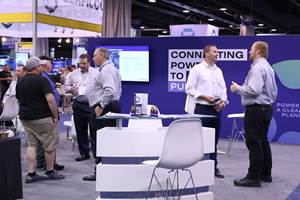NASF OSHA Alert: OSHA Proposed Update to Hazard Communication Standard
OSHA recently issued a notice of proposed rulemaking (NPRM) to amend and update the agency’s Hazard Communication Standard.

The Occupational Safety and Health Administration (OSHA) recently issued a notice of proposed rulemaking (NPRM) to amend and update the agency's Hazard Communication Standard. NASF reached OSHA officials and discussed the changes the day the new rulemaking package was announced. The formal proposed rule was published in the Federal Register on February 16, 2021 and can be found here.
The move would update the current US regulation to align with the most recent version (revision 7) of the UN Globally Harmonized System of Classification and Labeling of Chemicals (GHS). It also seeks to harmonize provisions of the HCS with Canada and other U.S. agencies, and respond to issues that have emerged from industry and other stakeholders since OSHA's last change to the standard in 2012.
A redline version showing proposed revisions to the current standard, as well as a general overview presentation by OSHA and other materials and updates, can be found here. If NASF members have specific concerns, please contact crichter@thepolicygroup.com or jhannapel@thepolicygroup.com.
Brief Background
The current OSHA standard was first issued in 1983 and provides a standardized approach to workplace hazard communications associated with exposure to hazardous chemicals.
The most recent 2012 update was a significant change. It aligned the Hazard Communication Standard with GHS revision 3, which created a more formalized and systematic approach to classifying chemicals and communicating hazard information through a new approach for Safety Data Sheet (SDS).
The changes proposed last week had been in preparation by agency officials under the Trump administration for some time.
OSHA’s Objectives for the Proposed Rule
OSHA notes that it expects the updated changes will improve worker protections and reduce chemical-related workplace illnesses and injuries by revising the information on labels and safety data sheets (SDS) for hazardous chemicals.
The agency has also determined that the proposed changes would make the standard more effective by improving communication of hazard information so that employees are better apprised of the chemical hazards to which they may be exposed.
Selected Changes
Among the modifications included in the new proposed rule are:
- Bulk Shipments - Additional flexibility for labeling bulk shipments of hazardous chemicals, including allowing labels to be placed on the immediate container or transmitted with shipping papers, bills of lading, or by other technological or electronic means that are immediately available to workers in printed form on the receiving end of the shipment;
- Labeling Options - More alternative labeling options where a manufacturer or importer can demonstrate that it is not feasible to use traditional pull-out labels, fold-back labels, or tags containing the full label information normally required under the standard, including specific alternative requirements for containers less than or equal to 100ml capacity and for containers less than or equal to 3ml capacity.
- Updates on Hazards - New requirements to update the labels on individual containers that have been released for shipment but are awaiting future distribution where the manufacturer, importer or distributer becomes aware of new significant information regarding the hazards of the chemical.
Other changes to the existing standard are proposed as well.
NASF is now reviewing the proposed rule changes and plans to submit comments on significant finishing industry concerns, in concert with other manufacturing organizations. The deadline for comments on the rule is April 19, 2021.
If you have questions, please reach NASF by contacting Jeff Hannapel at jhannapel@thepolicygroup.com or Christian Richter at crichter@thepolicygroup.com
This OSHA update is courtesy of the National Association for Surface Finishing (NASF). For more information or to become a member, visit nasf.org.
Related Content
OSHA, DOT and EPA Penalties Increase for 2023
The Department of Labor to revise civil penalty amounts for employer OSHA violations.
Read MoreNASF's SUR/FIN 2023: Bringing the Surface Finishing Industry Together
SUR/FIN 2023 is an opportunity for those in the surface finishing industry to expand their knowledge, expertise and network.
Read MoreElectroplating in the Context of Worldwide Nanotechnology Initiatives: A Heritage Paper
In the first part, a summary is presented on recently established nanotechnology initiatives in various countries around the world. Program funding levels and core activities will be compared to provide a basis for assessing business opportunities for various industries. The second part of the paper looks at specific examples of nanostructures made by electrochemical methods currently at various stages in their development, or already in use.
Read MoreNASF/AESF Foundation Research Project #120: Electrochemical Destruction of Perfluorooctanesulfonate in Electroplating Wastewaters – January – December 2023
This NASF-AESF Foundation research project report covers quarterly reporting for the year 2023 at the University of Illinois at Chicago. The objective of this work is to utilize a cost-effective reactive electrochemical membrane (REM) for the removal of PFAS from synthetic electroplating wastewater. Discussed here are the oxidation of PFOA with three different catalysts, development of a method for detecting PFAS, as well as work on 6:2-fluorotelomersulfonic acid (6:2 FTS) and electrodeposited bismuth/tin oxide catalysts.
Read MoreRead Next
Episode 45: An Interview with Chandler Mancuso, MacDermid Envio Solutions
Chandler Mancuso, technical director with MacDermid Envio discusses updating your wastewater treatment system and implementing materials recycling solutions to increase efficiencies, control costs and reduce environmental impact.
Read MoreDelivering Increased Benefits to Greenhouse Films
Baystar's Borstar technology is helping customers deliver better, more reliable production methods to greenhouse agriculture.
Read MoreA ‘Clean’ Agenda Offers Unique Presentations in Chicago
The 2024 Parts Cleaning Conference, co-located with the International Manufacturing Technology Show, includes presentations by several speakers who are new to the conference and topics that have not been covered in past editions of this event.
Read More












.jpg;maxWidth=300;quality=90)











